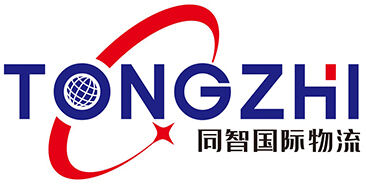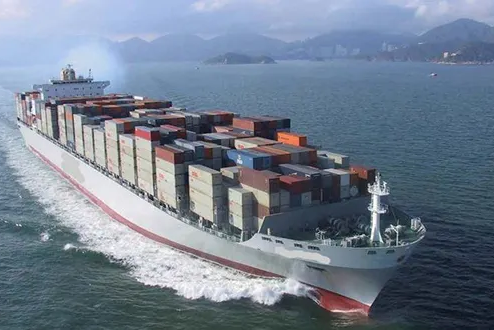Is bonn torthaíochta domhanda í teicneolaíocht cóiste, a chumasann sláintiú agus cosc na n-úsáideochta ar fud an domhain. Leis an méid atá ag dul síos go cainte ar thorthaí idirnáisiúnta, caithfidh gairmí a thuiscint leis na nuéalaíochtaí de théicneolaíocht cóiste chun a gcuid oibríochtaí logisticiúla a ghreamaíocht. Bíonn an alt seo ag plé leis na gníomha is fearr agus na nodanna ceannach chun greamaíocht na n-úsáideochta cóiste a bhaint amach.
Tuiscint Teicneolaíochta Cóiste
Tá smaoineamh le containers ag eagrú gach mír i bhforbair mhóra, stándaire. Tá na container seo ar fad éagsúla in n-éagortha, ach is féidir an 20-fothóg agus an 40-fothóg a thabhairt mar na n-éagsúlacht is ginearálta. Cuirfidh an stándarthaíocht beartas go soiléiri idir na longa, na traein agus na trucsaí, ag cinntiú go mbeidh sé modh comhshuite agus tuillte.
Buntáistí Smaoineamh le Containers
Tuillte: Tá na containers cruthaithe chun a bheith éasca a phróiseáil agus a chur isteach, a chuirfidh sprioc airgead ar fad ó thaobh na gcásanna faoi pháirt. Is é sin nach mbeidh an-am briste agus costais níos lú.
Dífhostú: Ní hé láitear na forbróga atá i bhcontainers níos mó ná dul i ngleic le damáiste nó le glacadh. Tá an-tacaíocht againn ón aer agus ón gcás go léir agus tá an obair den chainteoir ag cur béim ar an méid sin.
Costas Tuillte: Is tuillte ná bíonn smaoineamh le containers ná cáilíochtaí eile de shmaoineamh, go háirithe do shaoráin idirnáisiúnta fada. Beidh an cumas againn níos mó ná rialú na gcásanna i gcónaí i bhcontainer amháin agus is dóigh liom go mbeidh costais níos lú.
Féilearacht: Is féidir le conatainéirí tosach éagsúla a thógáil, ó mhéadaithe soilse agus mhéinscéala go n-imeannacha fósaithe agus pródaithe críochnaithe. Tá conatainéirí speisialta, mar shamplauinte frío (reefers), chun riachtanais speisialta cosaint teochtaire a chur i gcás.
Na Nascanna Is Fearr do Scailp Conatainéire
Roghnaigh an Cineál Conatainéir Ceart
Tá roghnú an cineál conatainéir ceart tábhachtach chun cinntiú ar an iompar shábháilte agus eisiúnaigh na n-imeann. Is féidir le conatainéirí díocha stairiúil a bheith comhshuiteach don chuid is mó de na n-imeann, ach ba chóir dár bhiznisí conatainéirí speisialta a chur in iúl donn riachtanais speisialta:
Conatainéirí Frío (Reefers): Do ghnóthaí imeartha a chuireannriachtanas ar chosaint teochtaire.
Conatainéirí Larg-Athraigh: Do ghnóthaí imeartha atá níos mó ná conatainéir stairiúil.
Conatainéirí Rác Spleách: Do chuid mhór agus imeartha mar shampluiméis agus gluacla.
Cuir Úsáid Uileas na Conatainéire i bhfeidhm
Is féidir le hiompar an spás uileasa atá faighte sa conatainéir cainte maidir le costais scailp. Ba chóir donn biznisí:
Pacáil agus Stach na Nod: Déan cinnte go bhfuil na nod pácaíte go dian agus go seasta chun cúpla a chur ar aghaidh le linn an tiomáin.
Úsáid Palataí agus Scídí: Cumasaigh anailís a dhéanamh agus spás a úsáid go hiomlán.
Cothromú Foirmhdú: Scailleadh foirmhdú go cothrom chun comhaontas a choinneáil agus miondúchán a chosaint.
Cuir Scóriúcháin Réadacha i bhfeidhm
Tabhair tuiscint shainiúil agus breis fhoinsí thar lear i dtiarthradh na n-impict. Scóriúcháin réadacha a chuireann i gcás:
Nuashonruithe Aitse: Coinnigh gairmithe tuillte faoi eolas faoi áit agus faoi stádas na n-impict.
Monatóireacht Tithnithe: Déan cinnte go bhfuil nod titim-chuimsithe faoi ranguirt.
Anailís Rithmhaire: Fógraigh síntí bheag agus slánaigh cosáin chun pléaráil níos tapa.
Déan Cinntiú le Riail
Tá cinntiú le riail íoctha tábhachtach chun cúpla a chur ar aghaidh agus buntáistí a chaomhnú. Déan gairmithe:
Foghlaigh ar Aimsítear Rialacha: Fan le chéile leis na dlíthe iompair/éirleach agus na riachtanais chustaim as gach áit ceannaithe.
Déan Scéimeanna Dírithe a Bhogadh: Déan cinntiú go bhfuil gach doiciméad, mar phillibh loinge, gairmí oiriúnachta agus déanamh chustaim, fillte agus curtha isteach ar fad in am.
Obair le Bráistithe Cústaím Iarchéimneacha: Cuir cúram le cústaím éifeachtúil agus laghdú ris an rith comhlíonadh.
Úsáid Teicneolaíochta chun Earráid Níos Fearr a Fhaighte
Tá ról criticiúil againn teicneolaíocht i gcás stiúir container shipping. Ba chóir do dhaoine gnó a úsáid:
Bogearraí Stiúir Iompair: Saineolas a thabhairt ar fhoirmuithe, scéimeanna agus tracáil.
Córasaí Bheith Atochtúla: Tógáil agus scaoileadh níos luaithe sa pháirt atá ag port.
Teicneolaíocht Blockchain: Meastacht agus slándáil a fheabhsú sa chuing cainteoirí trí réimsí neamhathraithe a sholáthar don tsaincheap agus na himreataí.
Bonnta Mionscagtha don Iompar Container
Bainistiú Costas
Is féidir le costais sprioc a bhaint iarracht mór ar an gclár sonrach gníomh. Bainistíocht costais a bheith ag feabhsú, go háirithe:
Nóiméad Sprioc: Cuir níos mó ná scileanna amháin isteach i gcás amháin chun fiontraíochtaí na scileanna a fháil.
Comhaontúí Nogadh: Sábháil rátaí agus téarmaí bródúla le shipping lines agus freight forwarders.
Rudacha Optimize: Roghnú na n-ardán is fearr agus is cothrom leis an gcás chun ama siúlaithe a laghdú agus comhrá de chonsumpail.
Bainistíocht Rís
Tá sé tábhachtach rísca a bhaineann le container shipping a bhainistiú chun cinneadh a dhéanamh faoi shábháilteacht agus ama éifeachtach cúiteach. Déan socrú ar na pointe seo:
Cover Insurance: Cosaint idirghníomhach
as díospóireacht, glacadh nó síntiú.
Planáil Contingency: Bogearraí a fhorbairt chun cúnamh a thabhairt dona scileanna neamhtheoranta mar phort straice nó neamhchumhachtaí dúchais.
Audits Régula: Díríonn audits ar pháirtithe agus prionsabal sprioc chun rísca a aimsiú agus a laghdú.
Naisc Thréitheachta
Tá sustainably ag dul suas in aghaidh logistíocht domhanda. Is féidir le gníomhphobal a fhorbairt práctais eco-friendly mar:
Úsáid na Nósanna Fuaisceach Fíor: Roghnaigh líní sailiúcháin a úsáid go léir fíor, nósanna fuaisceach chun leasaithe carbón a laghdú.
Cuir Impleadáil ar Fhoirmachaí Pacálaíochta Ghréine: Úsáid mátráid pacálaíochta éifeachtaithe agus biodegradable chun an méid atá i gceist don eolaire a laghdú.
Leasuithe Carbón a Chur in Iúl: Cuir isteach i gcásanna leasaithe carbón chun an tréimhse foirgnitheach den phléail sailiúcháin a neadú.
Conclúid
Tá sailiú chontainear mar chomhpháirt shonrach de mhaidir idirnáisiúnta, ag tabhairt faoi láthair éifeachtacht, slánú agus coinníollacht airgead. Tríd an chosaint nua-ghnéithe cosúil le roghnú an cineál contanéar ceart, an óptiúmacht chontainéar a fheabhsú, córas rianú nua-aimseartha a chur i bhfeidhm, cinntiú comhlíonadh rialacha, agus teicneolaíocht a thuiscint, is féidir le buiness a bheith ag breathnú ar na béimeanna is fearr de chontainéar sailiúcháin. Mar sin féin, bíonn cúram um costais a bhainistiú, ríscaí a laghdú, agus gníomhartha thairbheachas a chur i bhfeidhm tábhachtach chun brabús idirnáisiúnta a choinneáil.







































